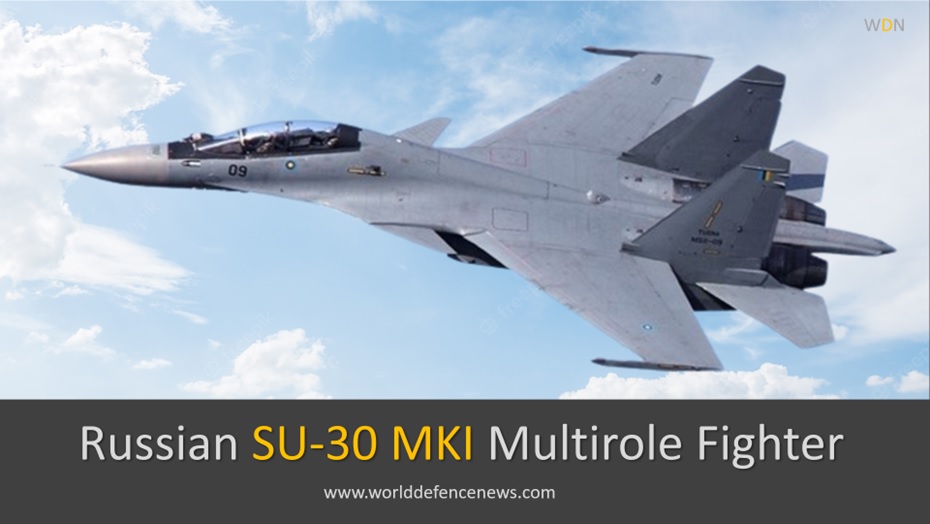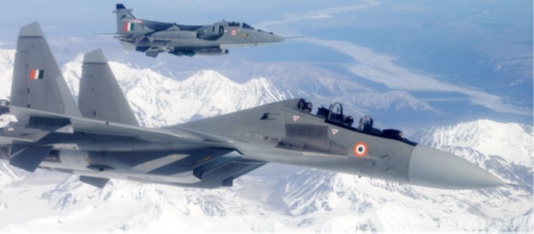
SU-30 MKI Fighter
Legendary Russian Sukhoi SU-30 MKI Multirole Fighter Jet
The SU-30MKI Fighter (NATO reporting name: Flanker-H) is a multi-role fighter aircraft developed by Russia’s Sukhoi. This aircraft is manufactured in India by state owned Hindustan Aeronautics Limited (HAL) licensed for production. It is an advanced version of the SU-30 aircraft and is considered one of the most capable fighter planes in the world. The MKI variant of the SU-30 is specifically designed to meet the requirements of the Indian Air Force (IAF).
The SU-30MKI has a maximum speed of Mach 2 and a range of 3,000 kilometers without refueling. It has a powerful engine that generate enough thrust and allows it to perform maneuvers such as the “Cobra” maneuver, which involves pulling the aircraft into a steep vertical climb and then quickly dropping the nose to level the plane. The SU-30MKI is equipped with highly sophisticated and advanced avionics and a state-of-the-art radar system that provides the pilot with enhanced situational awareness and ability to dominate the air combat.
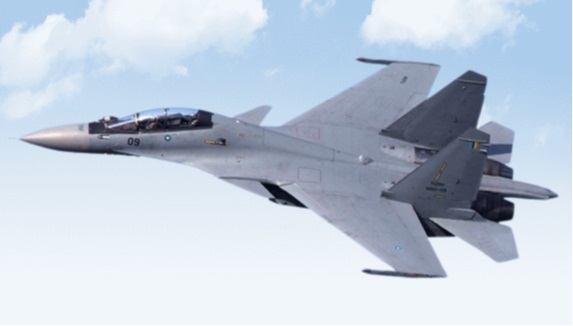
The aircraft has a length of 21.9 meters, a wingspan of 14.7 meters, and a height of 6.4 meters to perform air superiority role. It has a maximum take-off weight of 38,800 kg and can carry a wide range of weapons, including air-to-air missiles, air-to-ground missiles, rockets and bombs. The SU-30MKI can also carry a 30mm cannon and has the capability to conduct air-to-air refueling. The Indian variant is also modified to carry Brahmos missile to hit land and sea targets from standoff distances.
The SU-30MKI is currently in service with the Indian Air Force and has been used in various operations, including the 2019 Balakot airstrike. It has also been exported to other countries, including Malaysia and Algeria. The IAF operates the Su-30 MKI in large numbers upgraded and customized to the requirements of the IAF.
What Makes SU-30 MKI Formidable Opponent In The Sky ?
The SU-30 MKI (Multi-Role Combat Aircraft) is a formidable fighter jet that has earned a reputation as one of the most capable and versatile aircraft in the world. the SU-30 MKI is a potent fighter aircraft that combines maneuverability, firepower, and advanced avionics to create a formidable opponent in the sky.
Here are some of the factors that make the SU-30 MKI a formidable opponent in the sky:
- Maneuverability: The SU-30 MKI is an incredibly maneuverable aircraft. Its thrust vectoring powerful twin engines allow it to perform incredible aerial acrobatics and make it difficult for enemy aircraft to lock-on and engage in aerial combat.
- Armament: The SU-30 MKI is equipped with a wide range of weapons , armament, including air-to-air missiles, air-to-ground missiles, rockets, and bombs. It can engage both aerial and ground targets with precision and deadly force.
- Avionics: The SU-30 MKI is equipped with advanced avionics that allow it to detect and track multiple targets simultaneously. Its radar can detect enemy aircraft from a long distance, and its electronic warfare systems can jam and deceive enemy radars.
- Range And Endurance: The SU-30 MKI has a long range and can stay airborne for extended periods of time. This allows it to patrol large areas and engage in prolonged missions.
- Pilot Training: The SU-30 MKI is a complex aircraft that requires highly skilled pilots to operate it effectively. Indian Air Force pilots are extensively trained on the aircraft and are among the best in the world.
SU-30 MKI Multirole Fighter Jet
SU-30 MKI Armaments And Weapon Systems
The SU-30 MKI is a highly capable multi-role combat aircraft and is equipped with a wide range of armaments that allow it to engage both aerial and ground targets with precision and standoff distances. The SU-30 MKI is a highly versatile aircraft that can carry a wide range of armaments, allowing it to engage a variety of targets with pinpoint accuracy.
Here are some of the armaments that the SU-30 MKI is typically equipped with:
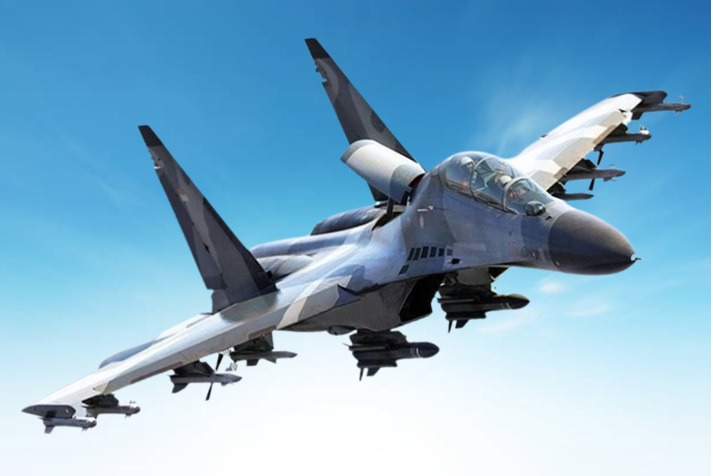
- Air-to-Air Missiles: The SU-30 MKI can carry a range of air-to-air missiles, including the R-27, R-73, R77 and RVV-AE. These missiles are designed to engage enemy aircraft at various ranges and altitudes.
- Air-To-Ground Missiles: The SU-30 MKI can carry a variety of air-to-ground missiles, including the Kh-29, Kh-59, and Kh-31. These missiles are designed to engage ground targets such as enemy tanks, ships, and radar installations.
- Bombs: The SU-30 MKI can carry various types of bombs, including free-fall bombs and guided bombs. These bombs are designed to engage ground targets such as enemy bunkers, buildings, and fortifications.
- Rockets: The SU-30 MKI can carry unguided rockets such as the S-8 and S-13. These rockets are designed to engage ground targets such as enemy troop concentrations, vehicles, and fortifications.
- Guns: The SU-30 MKI is equipped with a GSh-30-1 30mm cannon, which can engage both aerial and ground targets with deadly accuracy.
SU-30 MKI Air-To-Air Missiles
The Su-30 MKI is equipped with a range of air-to-air missiles, including Beyond Visual Range (BVR) missiles, which can engage enemy aircraft at long ranges. The Su-30 MKI’s air-to-air missiles, including BVR missiles, give it the capability to engage enemy aircraft at long ranges and in various scenarios, making it a highly capable fighter aircraft.
Here are some examples of air-to-air missiles used by the Su-30 MKI, including BVR missiles:
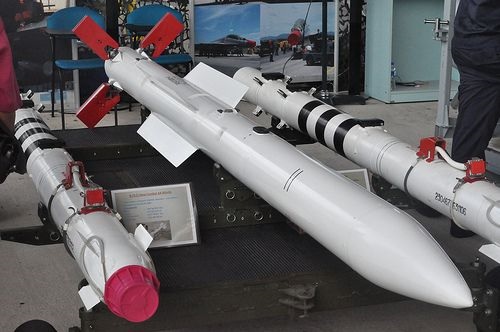
- R-77 (AA-12 Adder): A medium-range, radar-guided air-to-air missile capable of engaging targets at distances of up to 110 km (68 miles).
- R-27 (AA-10 Alamo): A family of medium-range, semi-active radar-homing air-to-air missiles capable of engaging targets at distances of up to 130 km (81 miles).
- RVV-AE (AA-12 Adder): A beyond-visual-range (BVR), active radar-homing air-to-air missile capable of engaging targets at distances of up to 160 km (99 miles).
- R-73 : The R-73 is a Russian short-range air-to-air missile designed to engage targets at a range of up to 30 km (19 miles) and altitude of up to 20 km (66,000 ft).
- Derby: A medium-range, active radar-homing air-to-air missile developed by Israel. It has a range of up to 50 km (31 mi) and is highly maneuverable, making it difficult to evade.
R-77 Air-To-Air Missile
The R-77 is a Russian medium-range air-to-air missile designed to engage targets at a range of up to 110 km (68 mi) and altitude of up to 30 km (98,000 ft). It is also known by its NATO reporting name, the AA-12 Adder.
The R-77 missile is equipped with an active radar seeker that allows it to track and engage targets beyond the visual range of the launching aircraft. It is also capable of performing “off-boresight” attacks, meaning it can engage targets that are not directly in front of the aircraft.
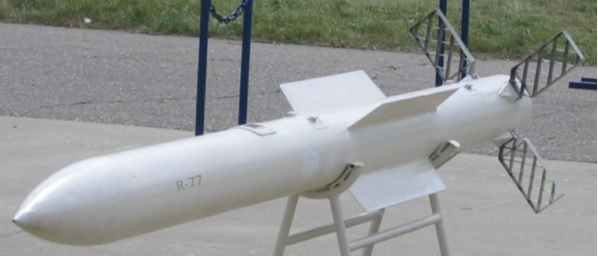
The R-77 missile has been used in a number of conflicts, including the 2008 South Ossetia War between Georgia and Russia, and the ongoing Syrian Civil War. It is widely exported and used by many countries, including China, India, and Iran. The missile is considered to be one of the most advanced air-to-air missiles in the world and is often compared to the American AIM-120 AMRAAM missile.
R-73 Air-To-Air Missile
The R-73 is a Russian short-range air-to-air missile designed to engage targets at a range of up to 30 km (19 mi) and altitude of up to 20 km (66,000 ft). It is a highly maneuverable missile that can be fired from a variety of aircraft, including fighter jets, attack helicopters, and unmanned aerial vehicles.
The R-73 missile is equipped with an infrared seeker that allows it to track heat sources, such as jet engines or the body heat of an aircraft, and can engage targets from the front or rear. It is also capable of performing “off-boresight” attacks, which means it can be fired at targets that are not directly in front of the aircraft.
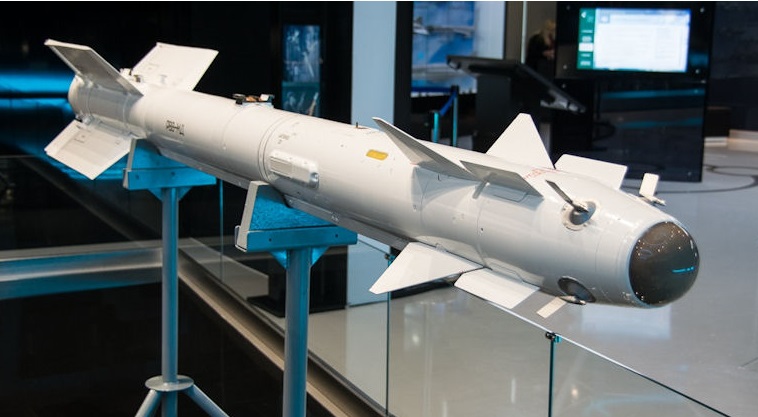
The R-73 missile has been used in several conflicts around the world, including the Gulf War, the Kosovo War, and the Syrian Civil War. It is a widely exported missile and is used by many countries, including India, China, and Iran.
Indian SU-30 MKI Vs Chinese SU-30
The Indian SU-30MKI and the Chinese SU-30 are both variants of the Russian Su-30, but they have some significant differences. Overall, both the Indian SU-30MKI and the Chinese SU-30 are highly capable fighter aircraft with similar performance characteristics. However, the Indian SU-30MKI has some advantages in terms of avionics, armament, and manufacturing.
Here are some key differences between the two:
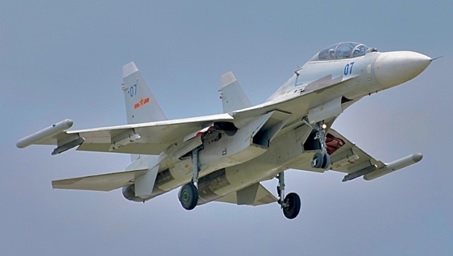
- Avionics And Electronics: The Indian SU-30MKI has advanced avionics and electronics, which have been upgraded with Israeli, French and Indian systems. This includes an Israeli-made helmet-mounted display, a French-made infrared search and track system, and Indian-made electronic warfare systems. The Chinese SU-30, on the other hand, has mostly Russian-made avionics and electronics.
- Armament: The Indian SU-30MKI and the Chinese SU-30 are equipped with similar armaments, including air-to-air missiles, air-to-ground missiles, bombs, and rockets. However, the Indian SU-30MKI has a wider range of armaments and is more versatile in terms of the types of munitions it can carry.
- Manufacturing: The Indian SU-30MKI is manufactured under license by Hindustan Aeronautics Limited (HAL) in India, while the Chinese SU-30 is manufactured by the Shenyang Aircraft Corporation in China. The Indian SU-30MKI has some components that are manufactured locally in India.
- Training And Operations: The Indian Air Force operates a large fleet of SU-30MKIs and has extensive experience in operating and maintaining the aircraft. The Chinese Air Force also operates the SU-30, but its fleet is smaller and may not have the same level of experience as the Indian Air Force.

